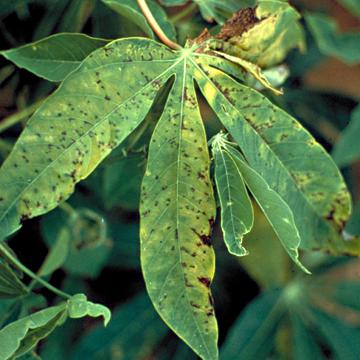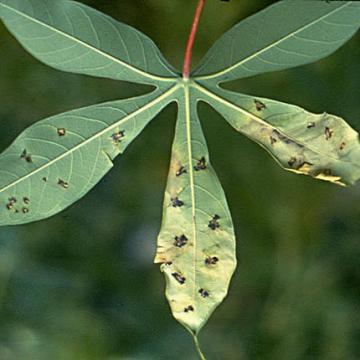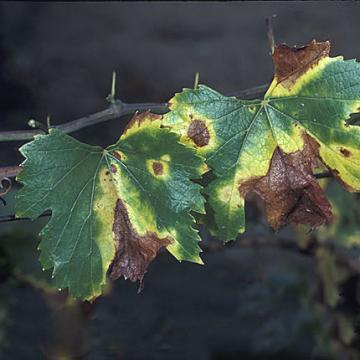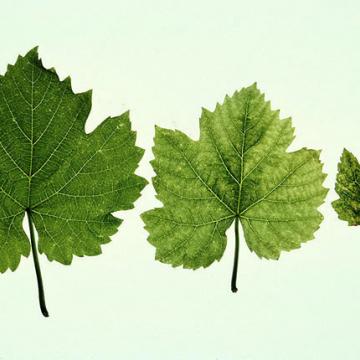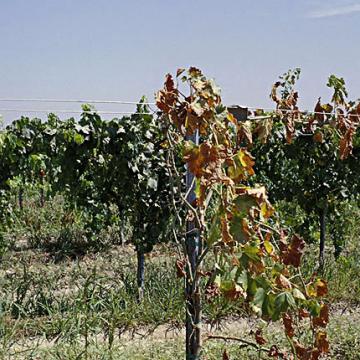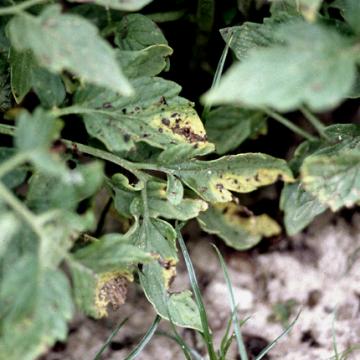DISEASE: Bacterial leaf spot (Bacterial necrosis)
HOST: Cassava
Cassava with yellowish leaves and water-soaked, angular spots. The disease is primarily on foliage, although the pathogen may invade stem buds and young branches.
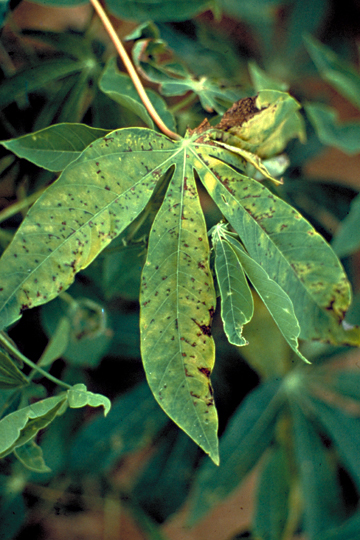
Bacterial leaf spot (Bacterial necrosis) | Cassava
DISEASE: Bacterial leaf spot (Bacterial necrosis)
HOST: Cassava (Manihot esculenta)
PATHOGEN: Xanthomonas cassavae
PATHOGEN SYNONYM: Xanthomonas campestris pv. cassavae
SOURCE: APS
DISEASE: Bacterial leaf spot (Bacterial necrosis)
HOST: Cassava
Cassava with brownish lesions and blackish edges. Leaves turn yellow with multiple infection sites.
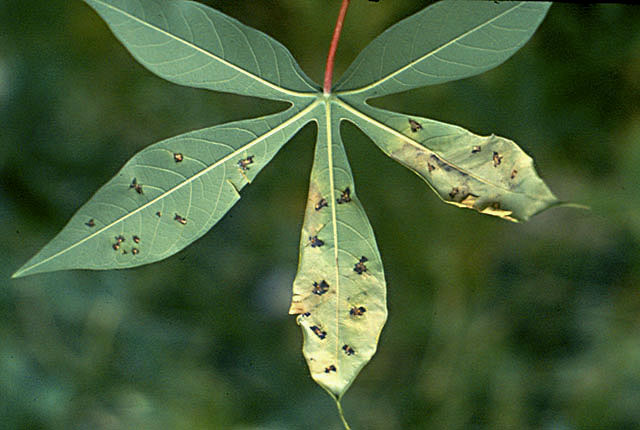
Bacterial leaf spot (Bacterial necrosis) | Cassava
DISEASE: Bacterial leaf spot (Bacterial necrosis)
HOST: Cassava (Manihot esculenta)
PATHOGEN: Xanthomonas cassavae
PATHOGEN SYNONYM: Xanthomonas campestris pv. cassavae
SOURCE: H. Maraite, A. Alvarez
DISEASE: Pierce's disease
HOST: Grape
Leaves with bright yellow, chlorotic areas with dead, dry, necrotic adjacent tissues.
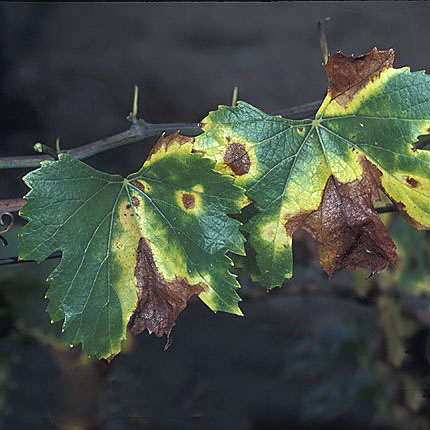
Pierce's disease | Grape
DISEASE: Pierce's disease
HOST: Grape (Vitis vinifera)
PATHOGEN: Xylella fastidiosa
SOURCE: J. Clark, S. Purcell
DISEASE: Pierce's disease
HOST: Grape
Early symptoms of Pierce's disease on leaves. Symptoms vary greatly among cultivars.
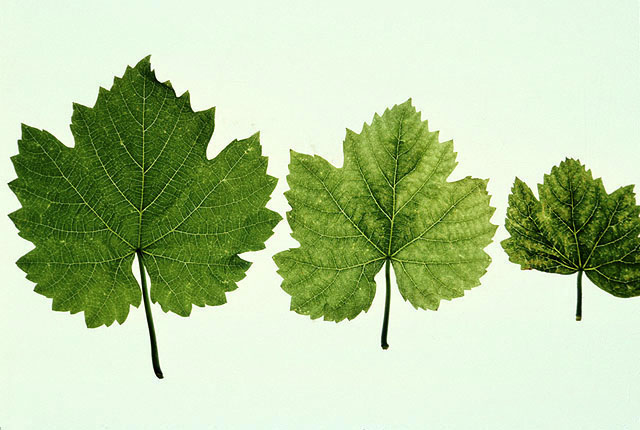
Pierce's disease | Grape
DISEASE: Pierce's disease
HOST: Grape (Vitis vinifera 'Chardonnay')
PATHOGEN: Xylella fastidiosa
SOURCE: J. Clark, S. Purcell
DISEASE: Pierce's disease
HOST: Grape
Late-season wood on diseased canes fail to mature, leaving green "islands" of tissue surrounded by dark brown, mature wood.
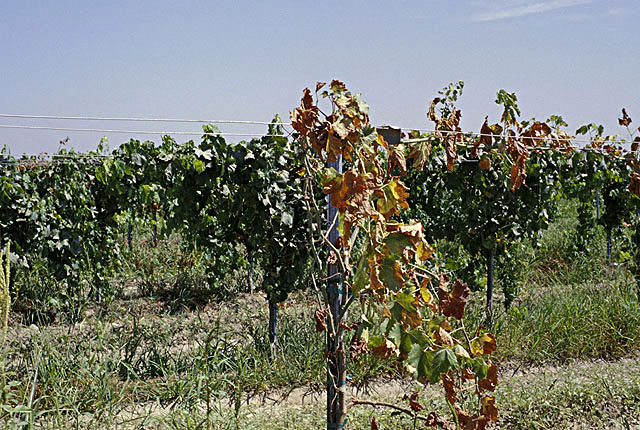
Pierce's disease | Grape
DISEASE: Pierce's disease
HOST: Grape (Vitis vinifera 'Fiesta')
PATHOGEN: Xylella fastidiosa
SOURCE: S. Purcell
DISEASE: Syringae leaf spot
HOST: Tomato
Leaves with brown necrotic lesions and chlorotic margins. Symptoms vary greatly among cultivars. Some have black or brown lesions with bright yellow, chlorotic areas and others do not have yellowing.
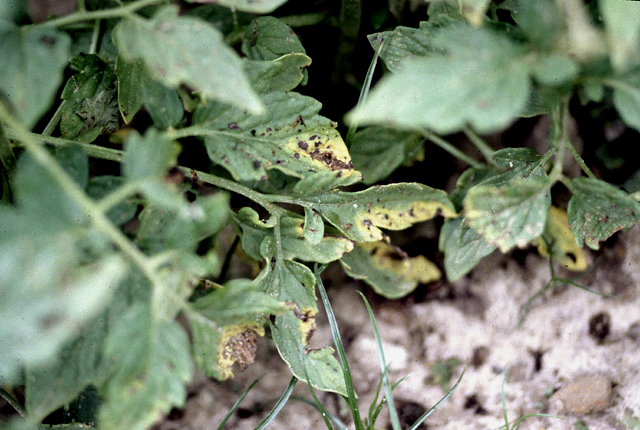
Syringae leaf spot | Tomato
DISEASE: Syringae leaf spot
HOST: Tomato (Lycopersicon esculentum)
PATHOGEN: Pseudomonas syringae pv. syringae
SOURCE: R. Gitaitis


